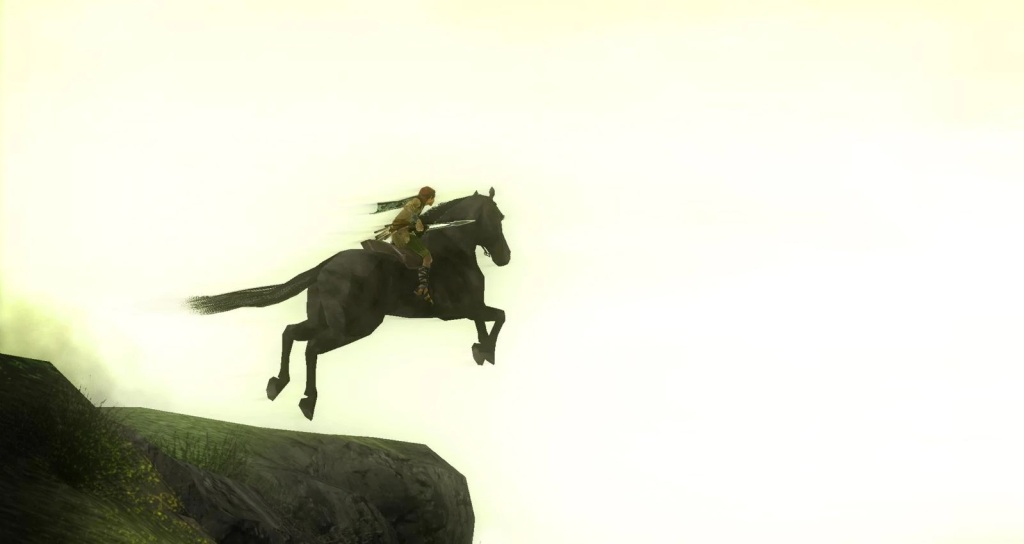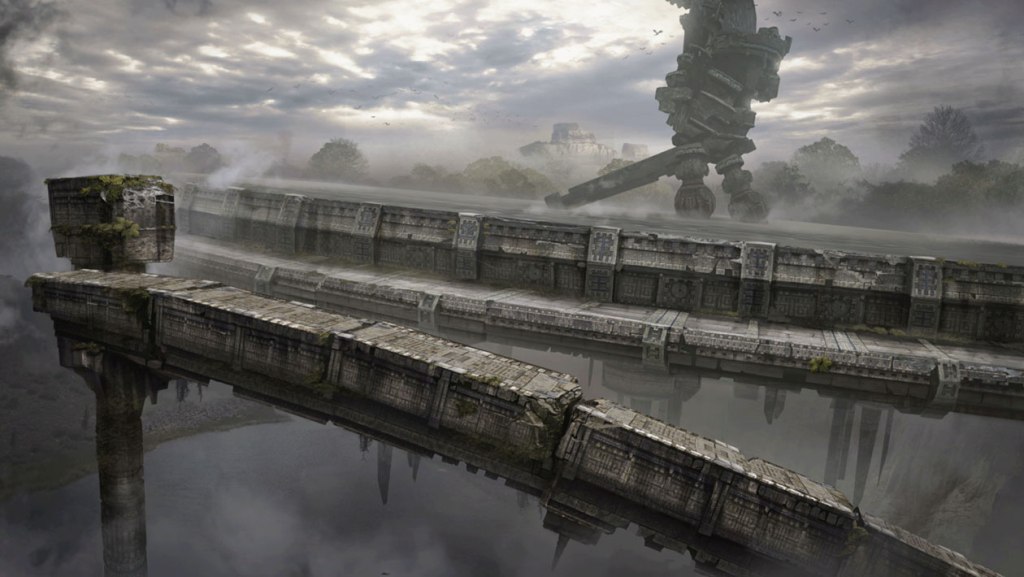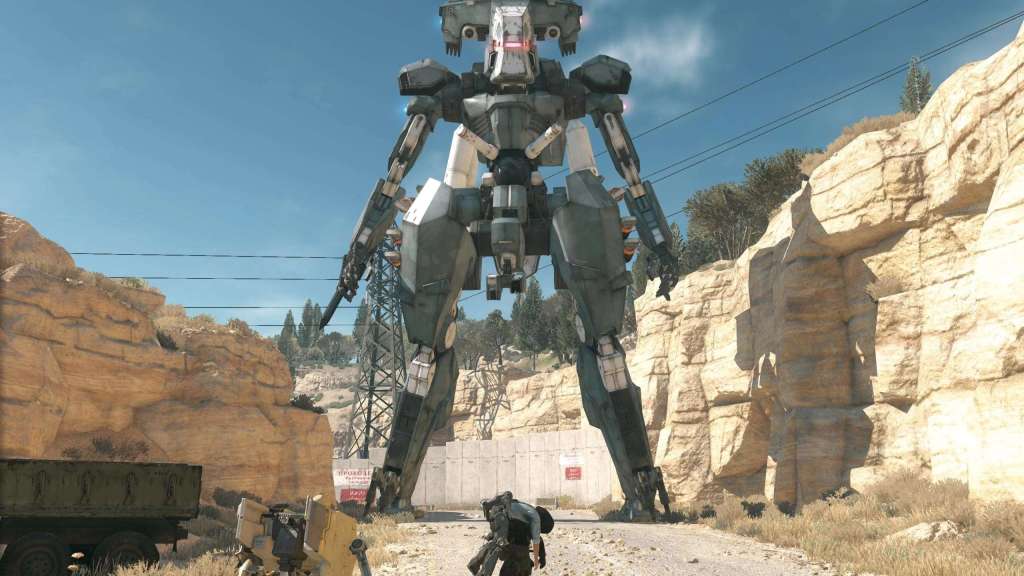
In the past, I’ve likened the structure of MGSV to that of Super Mario 64, where “castle” is to “levels” as “Mother Base” is to “Afghanistan/Africa.”
This made sense to me at the time. To an extent, it still does. In Mario, you traverse a hub world from which you embark on different missions across the same handful of levels (called “courses” by the game — the Mario Wiki informs me that there are 15 of these in the main + nine secret ones) again and again. In Metal Gear, you navigate a hub world (or sit anxiously inside a hub helicopter — at least I’ve always thought a kind of restlessness characterized the ACC) from which you embark on different missions across the same handful of levels again and again.
Each game employs open level design and varying objectives to evolve its series’ design in a way that affords large, complex 3D environments the mileage they need to be cost effective (for the developers) and worthwhile (for the players). Classic Mario games like Super Mario World and Super Mario Bros. 3 feature dozens upon dozens of levels that you only traverse once. Super Mario 64’s levels number far fewer, but recur. Classic Metal Gear titles feature environments that you navigate a small number of times. MGSV centers its stealth gameplay on guard posts and outposts to which you deploy countless times.
But even if this makes sense, and I think it does, there is another way of thinking about the overall structure of MGSV: via something like Shadow of the Colossus. (Of course there’s no valid reason to make this comparison, but that’s not going to stop me from doing so.)
Shadow of the Colossus is an interesting game, but you don’t need me to tell you that. Back when it first came out towards (what people no doubt assumed would be) the end of the PS2’s lifecycle, it stood out from the crowd. The game was on people’s radars (including mine, though I didn’t play it until years after the fact), thanks, probably, to some heavy marketing efforts from Sony.
But there was also another huge reason why people were so interested in this game, and it wasn’t the large, open fantasy environment, even though that probably helped in 2005. In one of the very few instances I can think of where a mainstream video game’s design played heavily into its positive word-of-mouth (Minecraft, while not mainstream at its 2009 outset, still claims this throne today), Shadow of the Colossus garnered something of a reputation for being a “boss fight game.”
This is true. Shadow of the Colossus dispenses with typical fodder mobs to focus almost exclusively on the 16 behemoth enemies that are its true center of gravity. There is even a dedicated button in the game to do exactly this: focus exclusively on the colossus with which you’re engaged in combat.

At the same time, Shadow of the Colossus also extends to us the possibility of an exactly opposite conception; as much as it is a game with only bosses, Shadow of the Colossus is as well a game with no bosses.
This idea sounds wrong at first, especially since you need look no further than the game’s premise to dispute it: in order to revive Mono, the game’s sleeping beauty-like heroine, you must track down and defeat the 16 colossi. Shadow of the Colossus commits to this premise with the doggedness of an 80s game, though of course it isn’t one. (By the way, this is a trend I enjoy in games, and one MGSV and Death Stranding also seem to align with: a game that uses modern technology but with a goals-driven design and strong premise that makes it feel like an 80s game.)
But as “Vincent K.” of the “Something in the Direction of Exhibition” blog observes in his 2017 review of Shadow of the Colossus, the colossi are not only boss monsters. Rather, they “occupy” an “ambiguous region […] between enemy to be killed and level to be scaled and explored.” Each of these 16 foes, encased as they are in earthen, architectural armor, as if they’ve been carved from the landscape itself (indeed several of them do actually emerge from the earth), is a living, navigable puzzle that lacks distinction from the environment in which it inheres — a puzzle, that is, whose design and solution come congruous with its setting.
Construed this way, the idea that Colossus actually contains no bosses whatsoever begins to take proper form and make sense, especially for the fact that it coheres with the game’s open (but linear) design. The open world of Shadow of the Colossus is almost unrecognizable as such today. It offers no waypoints, no NPCs, no quests, no interactions, little wildlife, no enemy encampments, no collectibles, no settlements, no tasks, no checklists, no day/night cycle, no systemic elements, no distractions, few secrets, little to do besides travel swathes of empty space in your search for the next colossus, interrupted by the occasional (as well as entirely optional and easily missable) minor challenge to upgrade your character. Insofar as the colossi themselves serve as the game’s levels, then, Shadow of the Colossus’ open world positions itself as a large hub — larger than the levels themselves — that connects the game’s 16 stages.

In this way, Shadow of the Colossus’ open world prefigures MGSV’s to a far greater degree than do the overweight open worlds that have become the norm in Colossus’ wake. Despite its tendency towards maximalism that counters Ueda’s aesthetic and ludic sensibilities, MGSV carries on Colossus’ task in order to translate the series’ stealth gameplay into an open environment: its open maps of Afghanistan and Africa are its real hubs — not Mother Base. Like Colossus’ world, these maps contain and connect the enemy strongholds and bases that are MGSV’s levels.
Through accident or otherwise (I don’t presume to know, nor do I care), MGSV reiterates and repurposes the structural logic of Mario 64 and Colossus. Like Mario 64, it populates single stages with multiple objectives, increasing the game’s longevity and introducing rewarding challenges to the skilled and dedicated. (MGSV also borrows from adventure games to enhance replayability — yet another topic for another time). Like Colossus, MGSV’s action runs seamlessly, its stages congruous with the hub that connects them. If Colossus is a game with no bosses — only stages that consist of a unified level design of which the game’s giant monsters are a part — then MGSV is the same. Its “bosses” (Quiet, Sahelanthropus, Eli, etc.) represent further iterations of the types of challenges that its levels already offer.

That said, MGSV does not perfectly transplant the structure of Colossus, nor should it. It alters it to achieve different ends. Both games use their large, open environments to achieve these contradictory ends. Where Colossus isolates, MGSV connects, and where Colossus segregates, MGSV integrates.
Vacancy permeates Colossus, producing feelings of solitude and isolation. To what effect depends, of course on, the player. For Vincent K.,the reviewer I linked above, the effect is actually one of mental animation, inspiring a “contemplative mode” of introspection that both arises from and complements game environments that, according to K., do little to stimulate either the sense or the imagination.
But solitude and isolation are not only feelings that Colossus’ environments arouse. They are also essential components of the game’s design and structure. Composed as a prescribed series of challenges, Colossus hinges on a design that isolates across spatial and temporal axes. It offers no possibility of connection between the areas of its game world or their inhabitants, and no potential for nonlinear approaches. Colossi can’t interact, and you can’t alter the order in which you face them. Each bout bears on the next only insofar as it teaches you more about the game’s systems and mechanics. By its open, interconnected world, Colossus appears to join its levels seamlessly. But really, the vast space that connects each level, as well as the strictly enforced order of the levels themselves, works primarily to isolate — that is, to keep the game’s stages separate (contrary to Ico, a more compact game that seeks to create a connected world where action can play out across ironically separated screens, but that’s another story for another time). Colossus lives (and, if Breath of the Wild is any indication, dies) in the lineage of Zelda, then: locate individual, disconnected levels → clear individual, disconnected levels → win game.
MGSV is not like this. Its open world serves the opposite purpose: not to separate, but to connect. MGSV’s design, particularly that of its main missions, employs large environments whose primary role is to connect levels that would otherwise exist apart from one another and facilitate interplay between different regions of the map — to put the bases that make up the game in communication (literally: there is a communication network between bases). This is the basis of the game’s particular style of emergent narrative, where simple stories play out in an open-ended fashion across large areas populated by bases that can communicate with one another, and by NPCs who travel from place to place with their own goals, independent of the player until the moment of intervention.
This configuration — Colossus on the one hand and MGSV on the other — is a good example of how game design can implement similar tools in different ways to achieve different effects. If we understand the colossi in Colossus and bases in MGSV to be non-traditional implementations of the concept the video game level, then we can say that both games integrate separate stages into a large, openly traversable map. From here, Colossus leans more traditional in its approach. Despite the integration, it keeps its levels delineated; what connects the levels superficially actually isolates them. Via this structure, Colossus afford itself the possibility to suggest ludically what its images of disconnects, breaks, canyons, gaps, chasms suggest visually: an inevitably of fragmentation or an impossibility of connection.
MGSV integrates separate levels more sincerely: its bases actually are connected, both by communication networks and by the stories that play out in real time during the game’s missions. By building connections, MGSV increases the tension of stealth and the risk of overt operations: one wrong move may alert an entire cluster of bases at once and, in certain situations, alter the course of the mission and your objectives as a player.
This turned out much longer than I thought it would, but then again I’m under no false impression about my lack of ability to self edit. Anyway, this is what I’ve been thinking lately when it comes to MGSV’s gameplay and structure. All this is without even mentioning GTA, which is probably a much more apt series to put in conversation with MGSV than either Mario or SotC/Ueda stuff. But since I’ve gone on long enough here, that’s yet another post for another time.
By Kiyan. Hit me up on twitter @dra9onsMGS.